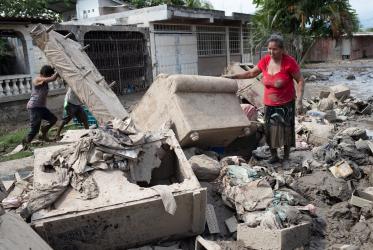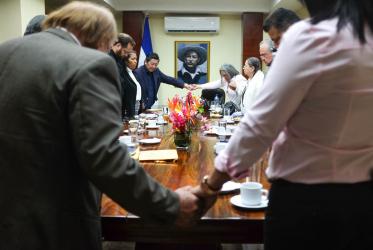Nicaragua
Indigenous people were living in the region when it was colonized by Spain in the 16th century. Britain established its influence on the Caribbean coast in the 17th century. Nicaragua became sovereign in 1854 and added the east coast, where the Miskitos live, to its territory in 1894. Dictatorships succeeded each other during the first half of the 20th century, with frequent US intervention, and armed resistance under the guerilla leader Sandino. From 1936 to 1979 the Somoza dictatorship held the country in its grip. In 1972, Managua was totally destroyed by an earthquake that took 50,000 lives. The mismanagement of international relief funds accelerated the armed opposition, resulting in the Sandinista revolution of 1979. The new regime introduced widespread social and economic reform, aiming at justice and popular participation, and had the support of the poor. As of 1981, however, the USA armed a counter-revolution and strangled Nicaragua economically, which brought the Sandinistas down in 1990. Nicaragua's economy, based on subsistence farming and the export of bananas, coffee and other cash crops, virtually collapsed during the war. The Catholic Church is the majority church. The largest non-Catholic church is the Assemblies of God (Pentecostal). Pentecostals churches represent close to 10 percent of all Christians. The National Evangelical Council of Nicaragua is affiliated with the WEA. Sectors of the Christian churches and Christian groups have been supportive of the struggle for social justice, in cooperation with the ecumenical movement and the WCC.


